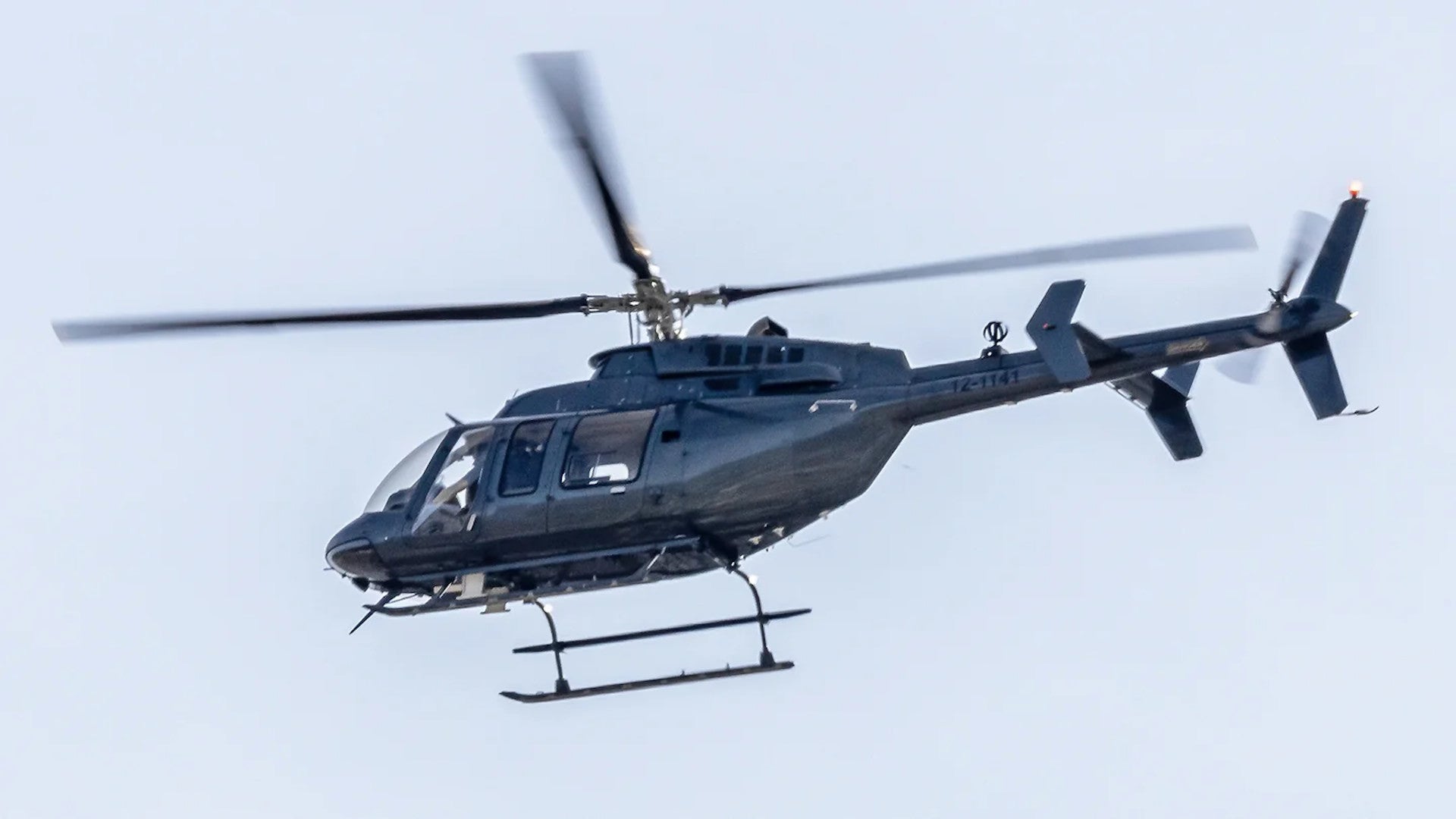Yesterday, plane spotters in the greater Los Angeles area caught glimpses of three mysterious Bell 407 helicopters painted overall in what looks to be a dark gray color, but with no easily identifiable markings. Covered in antennas that one might expect to see on examples in use by military or law enforcement units, but unlike any we at The War Zone are familiar with, the sightings immediately caught our attention. While we don’t know for sure who is operating them or for what purpose, these helicopters appear to have a very unusual history and there are solid indications that they could be associated with a very secretive U.S. military aviation unit.
Chris Shaw of Shaw’s Aviation Photography was among the first to spot the trio as they arrived at Bob Hope Airport, also known as Hollywood Burbank Airport or KBUR, which is situated just north of Los Angeles, on Jan. 12, 2021. Later that day, plane spotter Scott Lowe caught a glimpse of two of the helicopters leaving that airport.

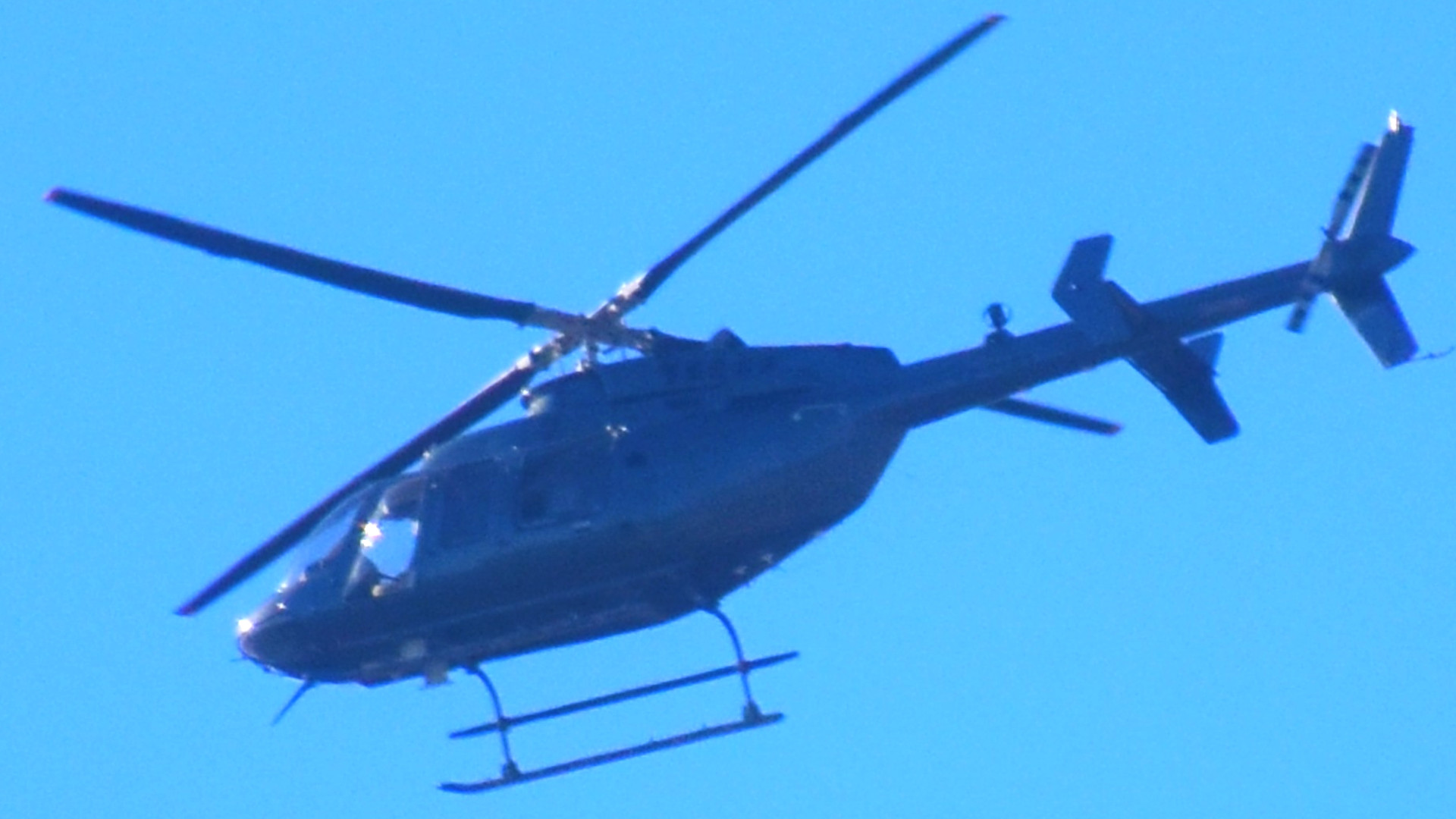
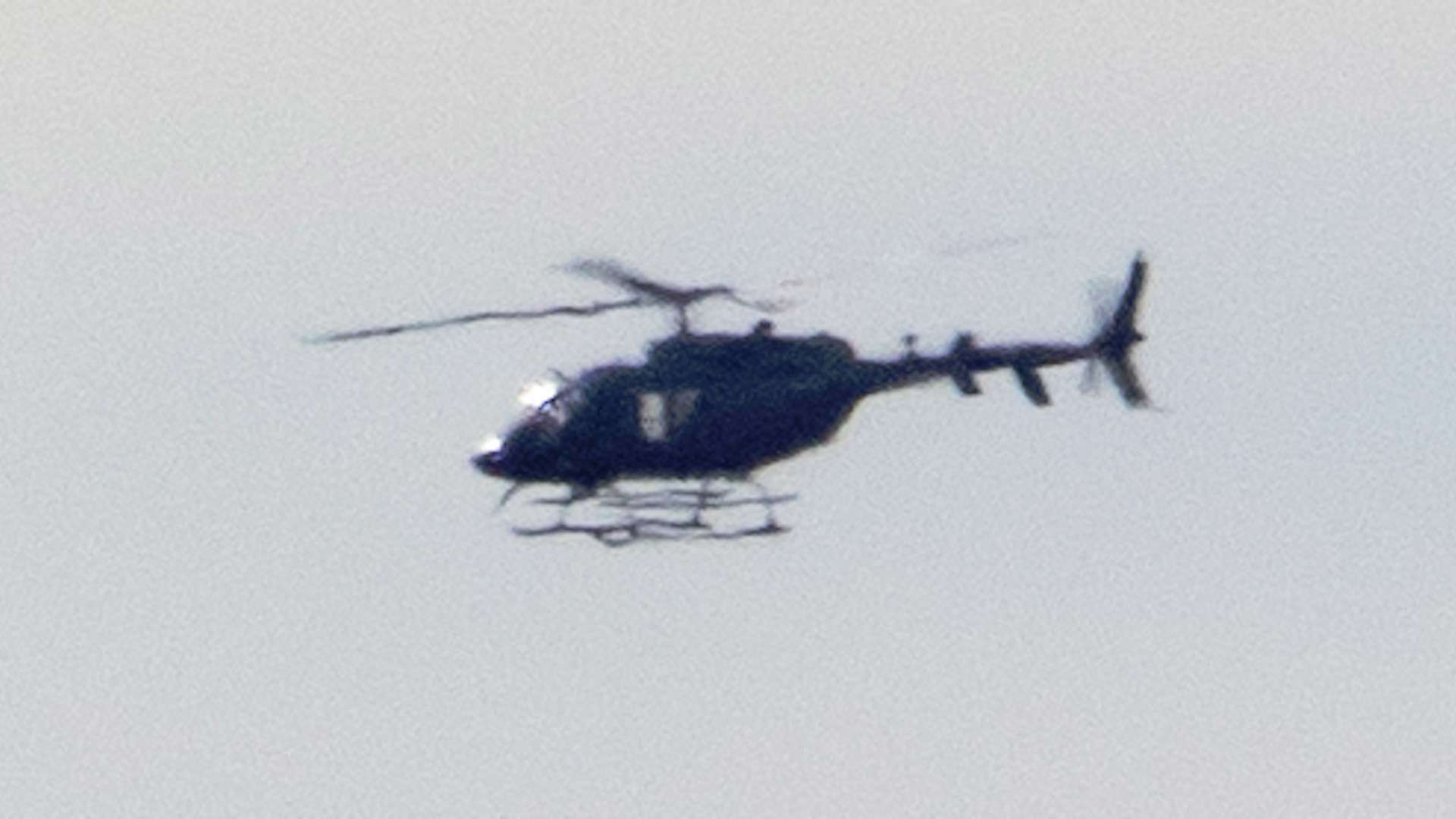
From what we can these helicopters each have an “egg-beater” or “O Wing” type UHF satellite communications (SATCOM) antenna on their tail booms. This installation is similar, if not identical to the one that the U.S. Army used on its now-retired OH-58D Kiowa Warrior armed scout helicopters, from which the commercial Model 407 was derived.
They also have a pair of prominent blade-type antennas located ventrally under the fuselage, which are generally associated with high-frequency radios and other communications systems. Various other smaller antennas are also visible under the rear fuselage. The helicopters notably do not appear to have any kind of sensor turret of the types that typically hold electro-optical or infrared cameras underneath the nose or elsewhere beneath the fuselage. They are also equipped with high skids, which are commonly found on versions of the Jet Ranger family of helicopters that are tasked with utility work, law enforcement applications, and military missions.
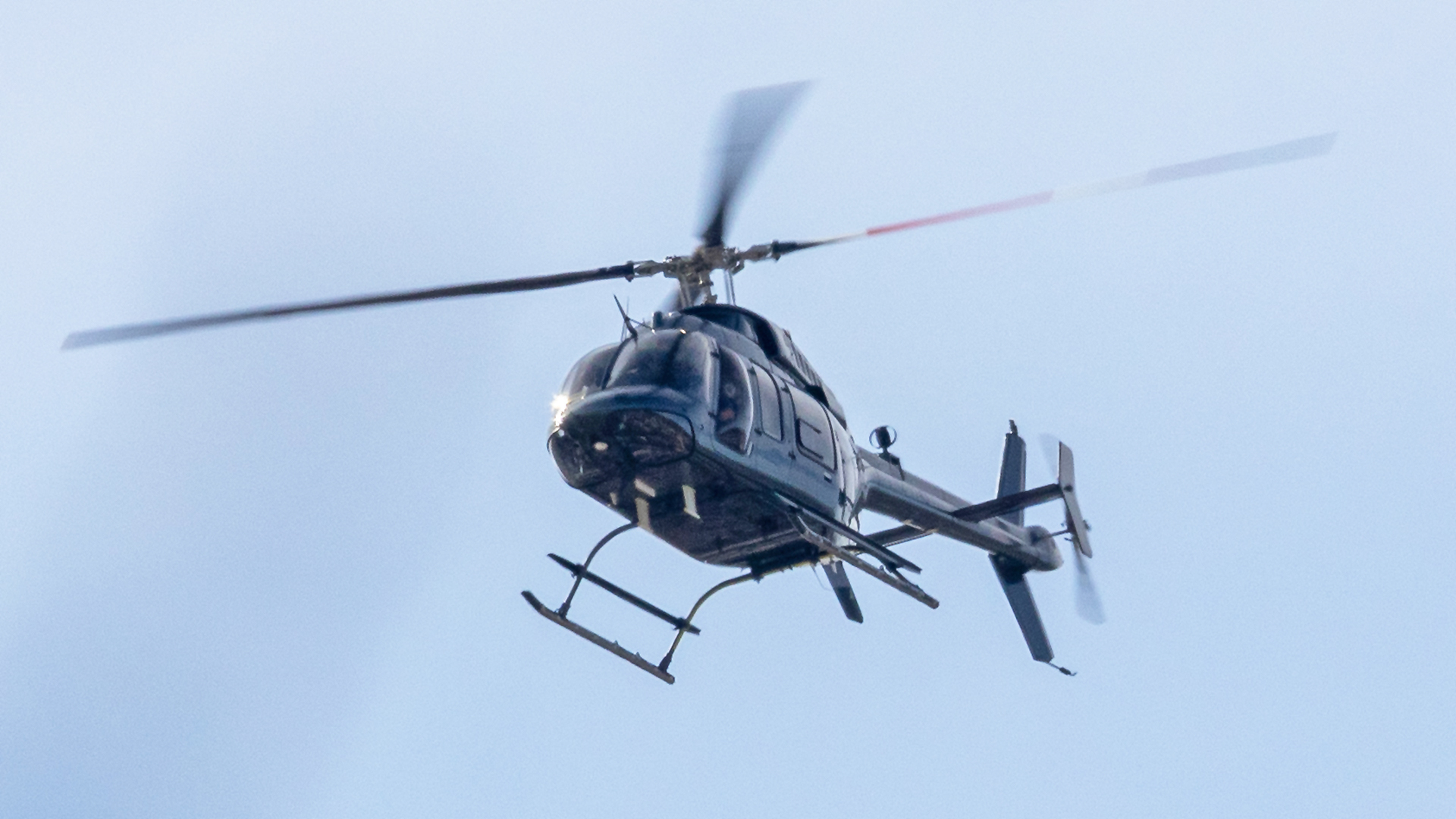
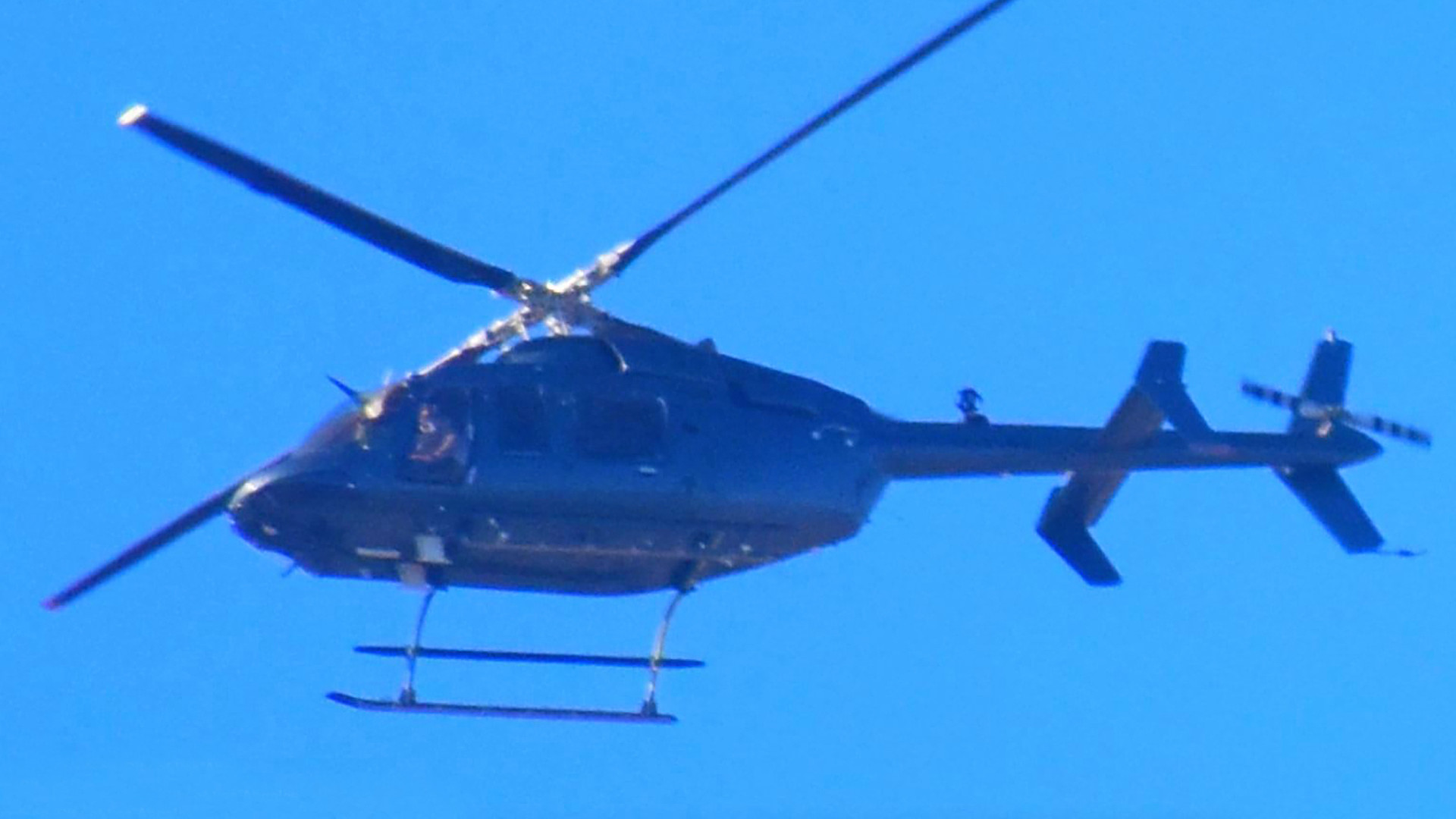
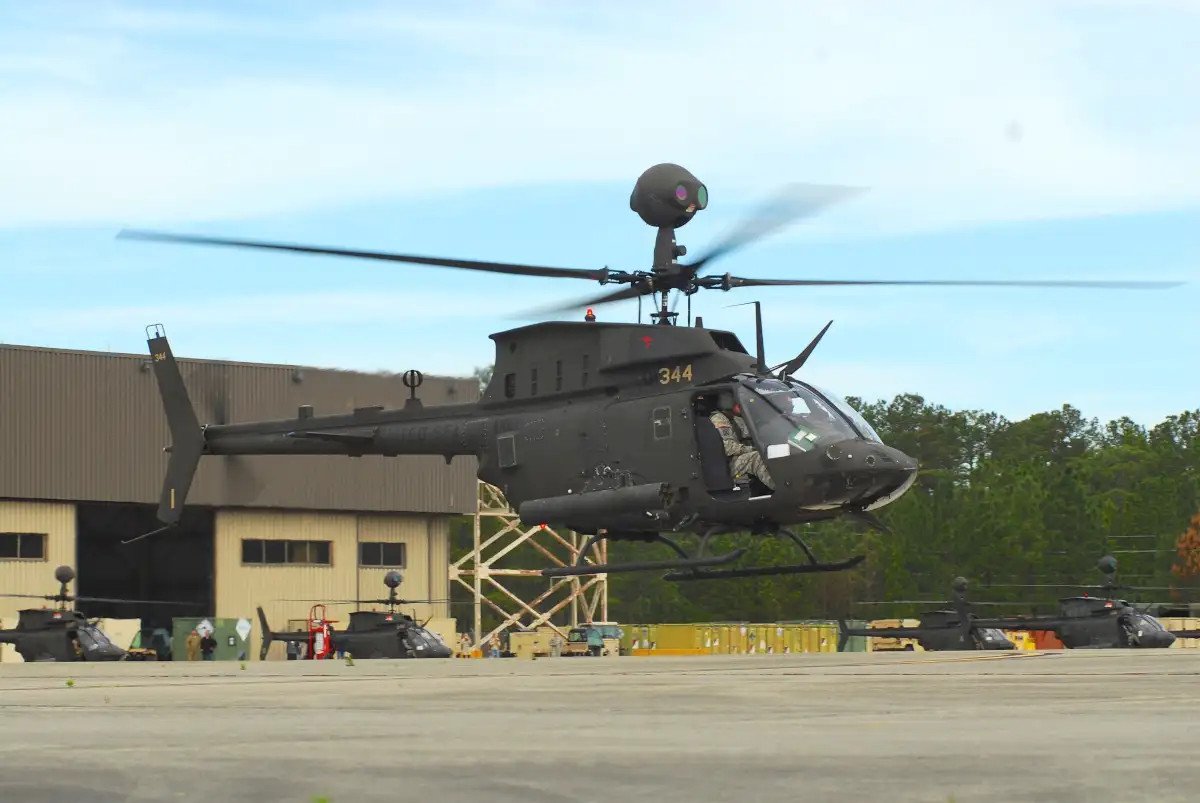
Online flight tracking software indicates that the pair of helicopters that subsequently departed Burbank had taken off from right in front of the fire station at KBUR, which has a pair of marked helipads, and then had flown over parts of Los Angeles before continuing to the Los Angeles County Fire Department’s Camp 8, a former U.S. Army Nike surface-to-air missile site, near Malibu. They then returned to Burbank. The War Zone has already reached out to the Los Angeles County Fire Department for further information.
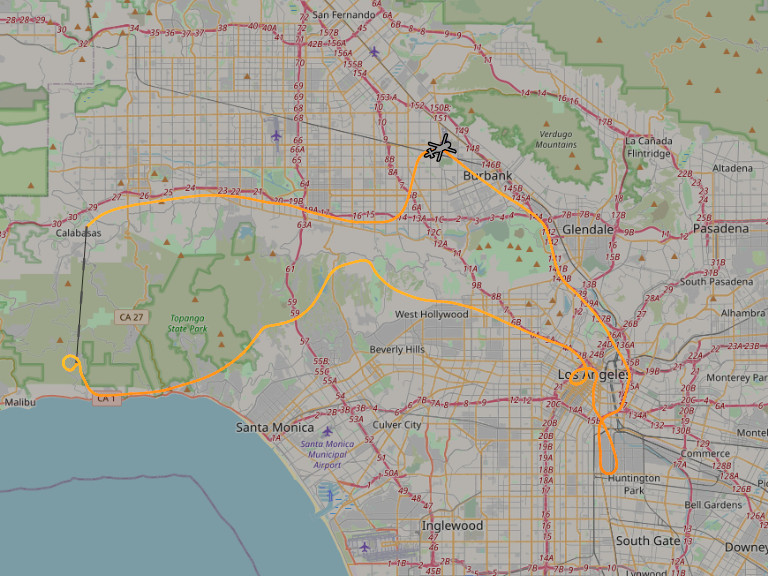
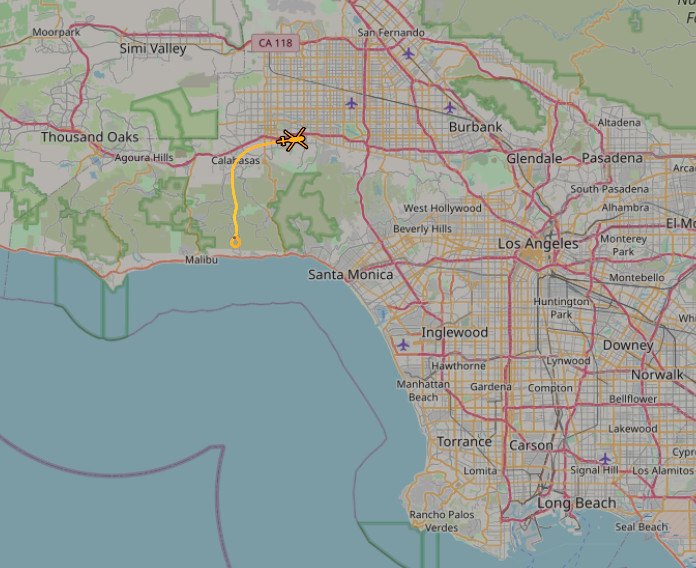
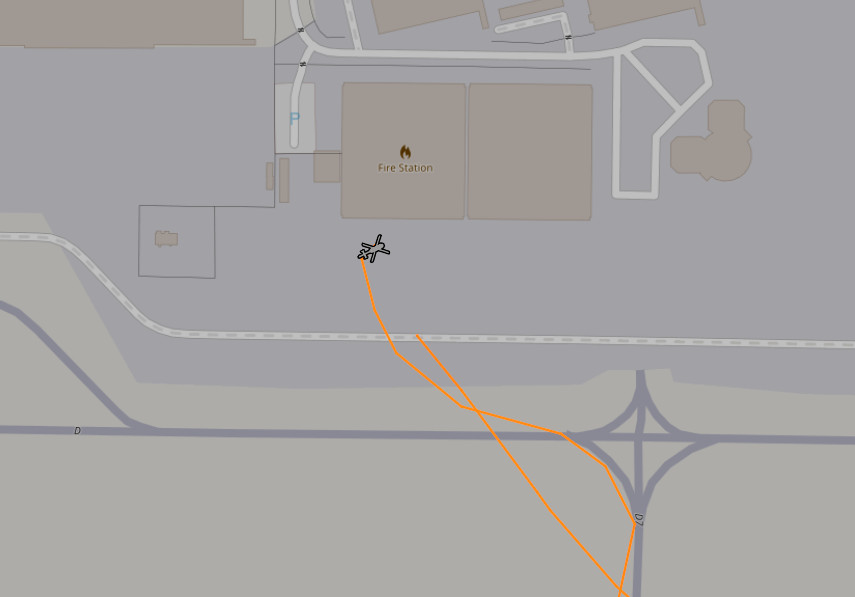
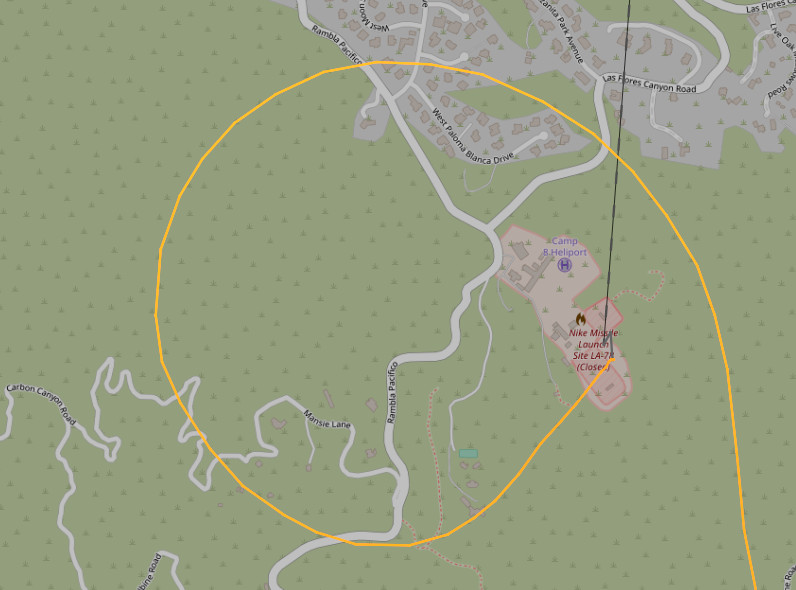
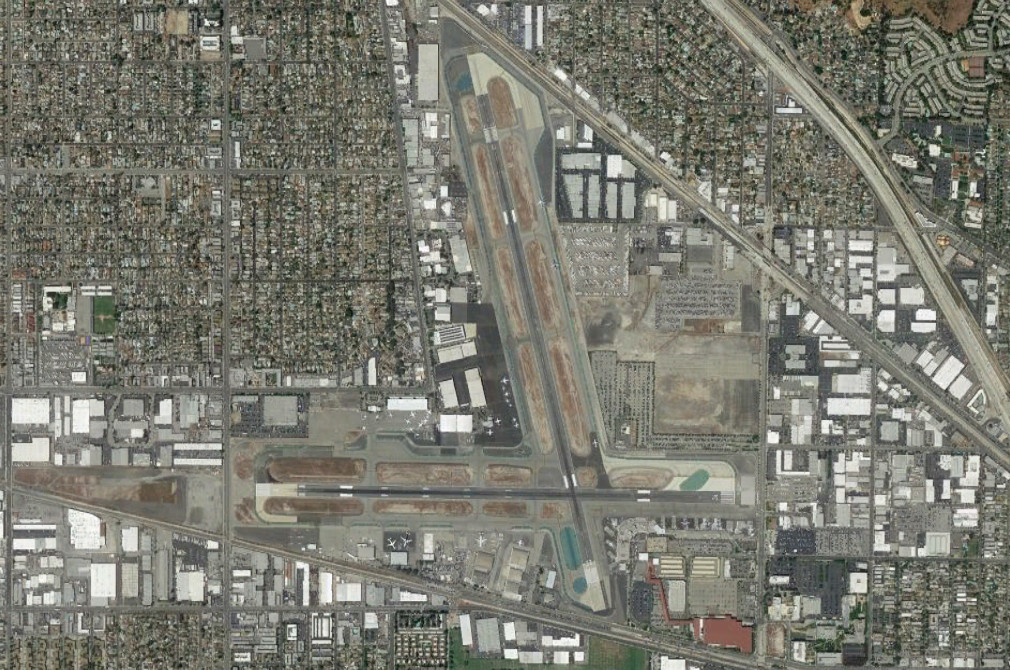
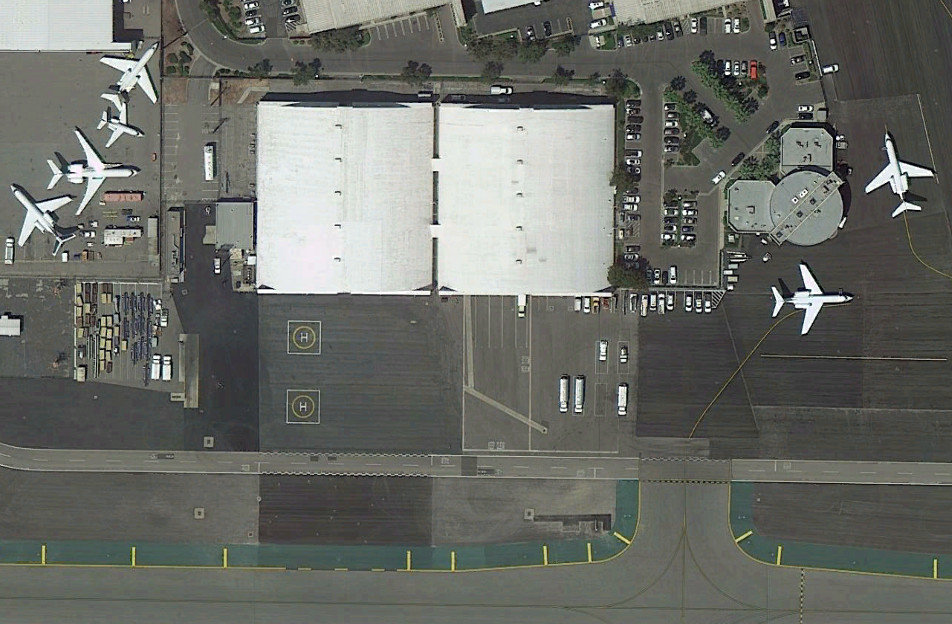
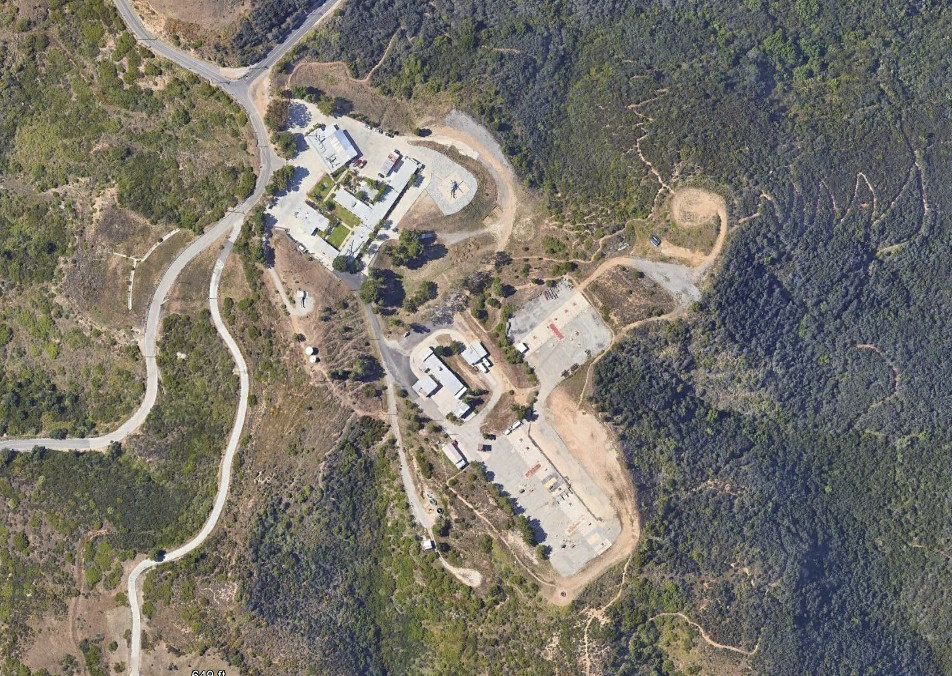
It’s also worth noting that online flight tracking software indicates that these helicopters had flown all the way across the country, starting their trip over the weekend or late last week. They made multiple stops along the way, including at Addington Field/Elizabethtown Regional Airport in Kentucky, Albuquerque International Sunport in New Mexico, Flagstaff Pulliam Airport in Arizona, and Lake Havasu City Airport in Arizona, before arriving in Burbank. Their exact point of origin is unclear, but it seems most likely to have been somewhere on the central east coast.
Audio of an exchange between the pilot of one of the helicopters and air traffic controllers at KBUR confirms that the trio were all Bell 407s and that the flight, as a whole, was using the callsign Mike 01. Using the lead aircraft’s callsign as the callsign for an entire flight is a typical practice within the U.S. military, especially U.S. Army special operations forces units.
On Jan. 13, all three helicopters flew a route that took them first toward San Bernadino, to the east of Los Angeles, then down to the Pacific coast, between Huntington Beach and Long Beach. After that, they returned to Burbank.
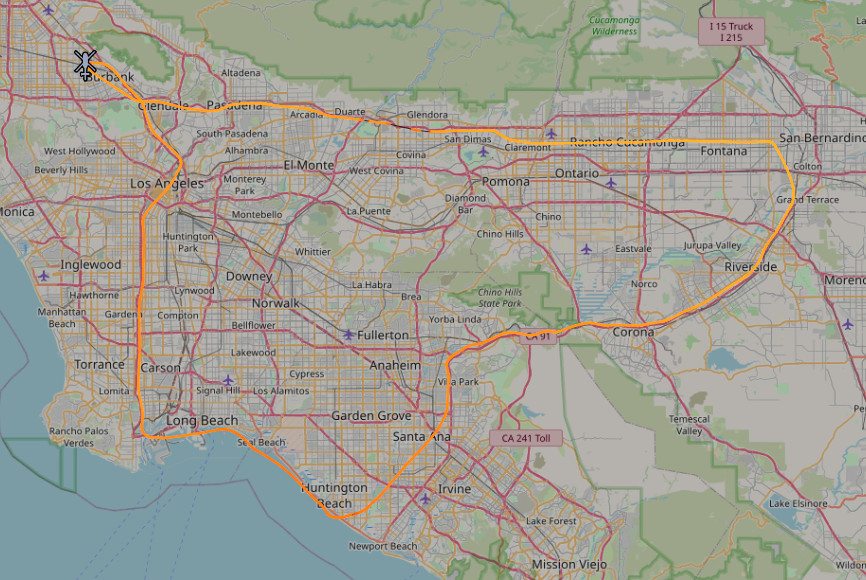
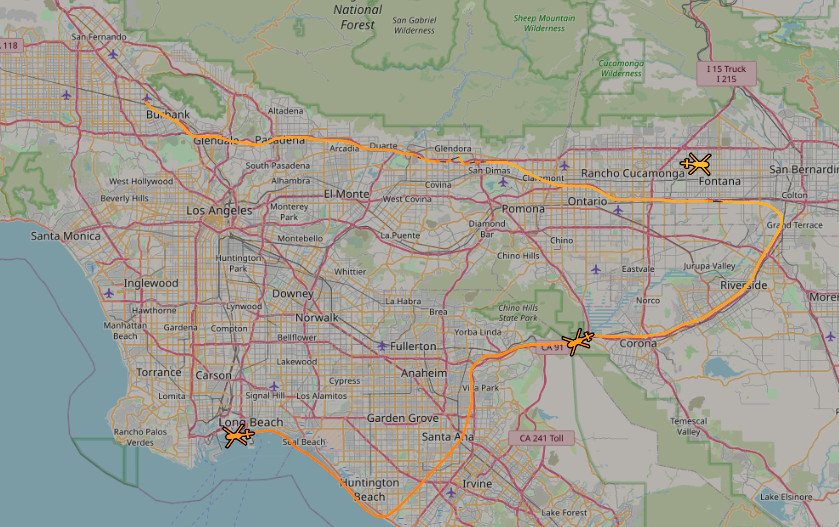
We don’t know for sure what organization these helicopters belong to or what they’re doing in California. Online flight tracking website ADS-B Exchange has identified the helicopters, via military-type transponders, as having “callsigns” that may be serial numbers – 121141, 121142, and 121143. Photographs Scott Lowe subsequently provided to The War Zone showed the helicopters have these serials written in black or dark blue on their tail booms.
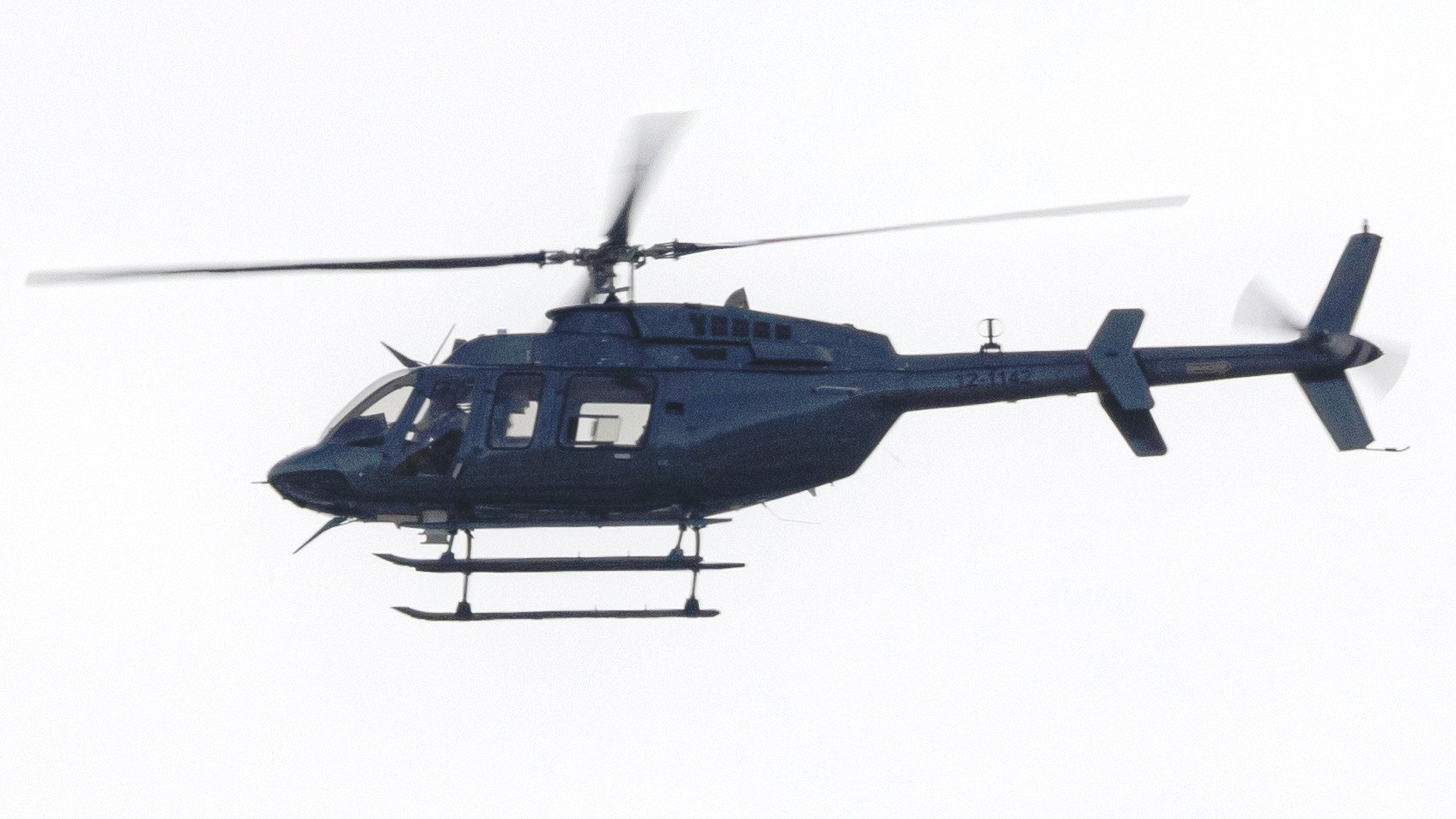
The U.S. military did, for convenience, assign the serials 12-1141, 12-1142, and 12-1143, to a trio of Bell 407 helicopters that Iraq purchased, prior to their delivery to that country. “Three prototype aircraft will remain on Redstone [Arsenal in Alabama] in accordance with the Iraqis’ wishes for the aircraft’s future development and testing,” according to a U.S. Army news story in 2013. It’s not clear if those helicopters were the ones with these particular serials, but it seems very likely. Iraq may well have ultimately decided not to have had them delivered and transferred them to the U.S. military, that is if they were not still ‘owned’ technically by the United States in the first place.
Regardless, the examples that Iraq did receive are in a configuration that is different from the ones recently seen flying near Los Angeles, though further development work on the aircraft that remained in the United States could have led to changes in their outward appearance. Reverting military variants of the Jet Ranger family to civilian configurations is hardly unheard of. It’s also worth noting that the United Arab Emirates also flies gray Bell 407s, but the paint is matte in nature, rather than the shiny paint on these new mystery helicopters, and again the configurations are different.
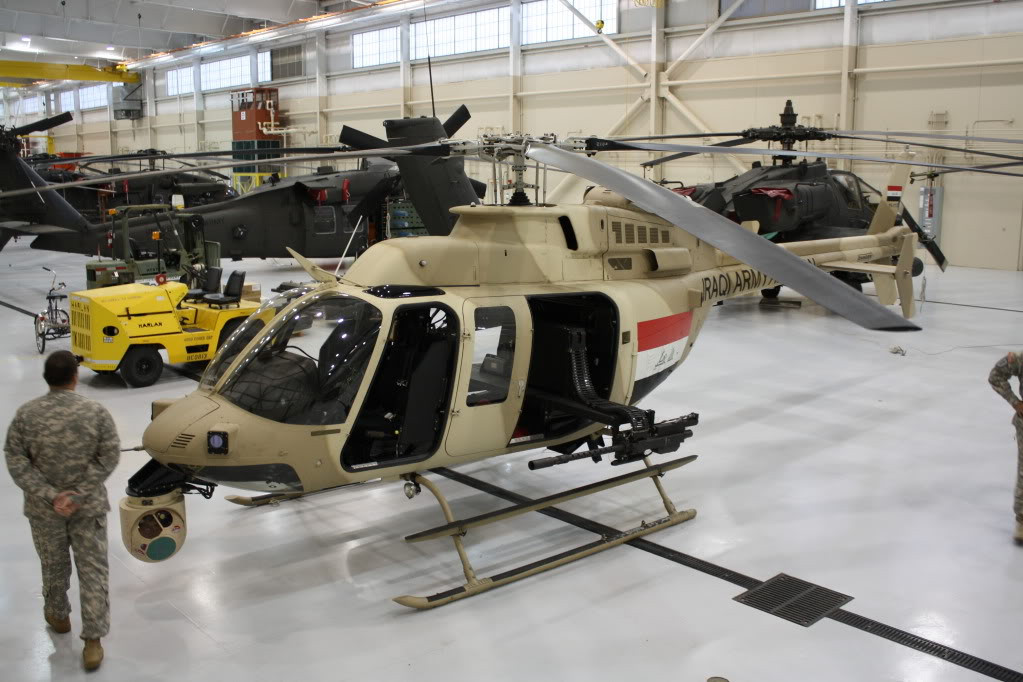
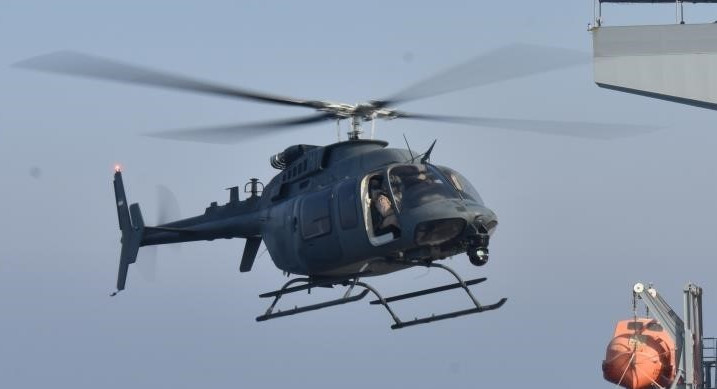
It’s worth remembering that the Army announced in 2017 that it was looking for vendors to supply up to 150 different Bell helicopters, including Model 407s, under a contract that would have also supported the needs of “other government agencies,” as well as foreign allies and partners.
There are also some broad similarities between these helicopters and a number of Bell 407s that the Federal Bureau of Investigation’s (FBI) elite Hostage Rescue Team (HRT) operates. Its name notwithstanding, HRT is one of the U.S. government’s top-tier units for direct-action counter-terrorism operations at the national level. You can read more about this in this past War Zone piece.
However. available pictures of the HRT Bell 407s show them painted in a distinct dark blue color and fitted with “batwing” type SATCOM antennas above the cockpit, rather than egg-beater-types on the tail boom. They are almost universally seen equipped with Tyler Technologies Tyler Special Operations Platforms (TSOP), plank-type arrangements that are mounted on either side of the helicopter that allow for the rapid insertion or extraction or personnel. They also provide a stable platform where armed individuals, including snipers, can sit and engage targets down below.
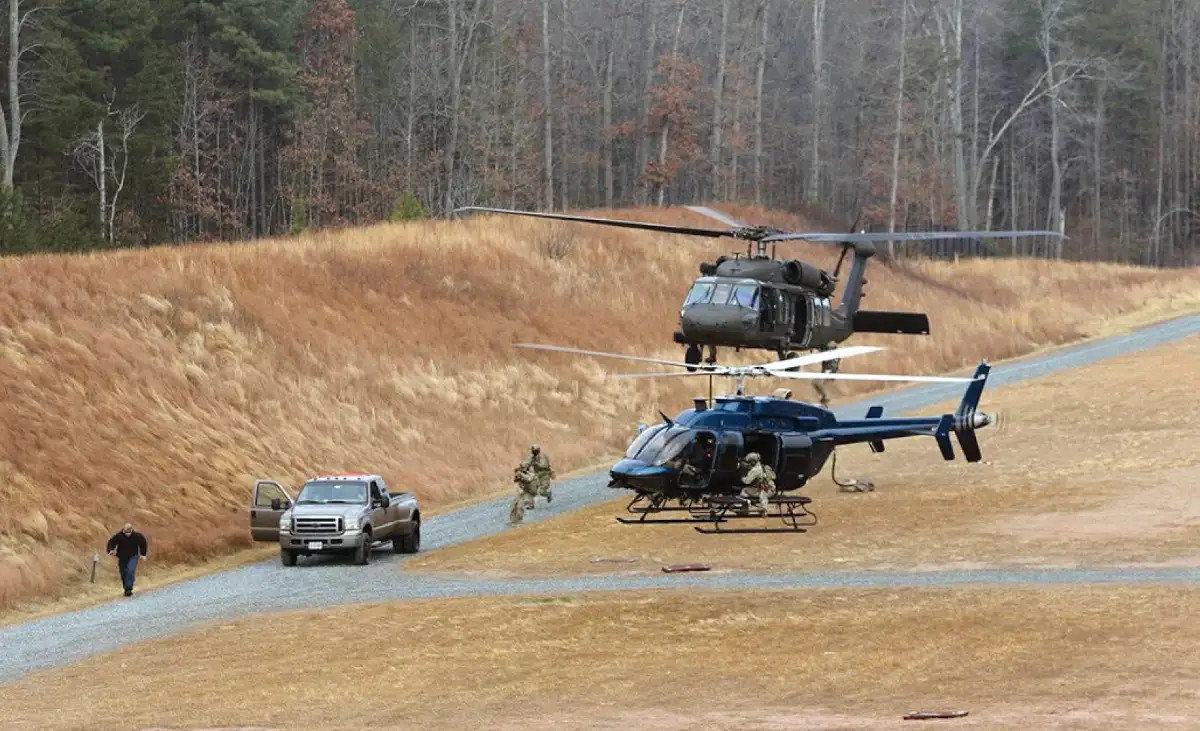

That being said, FBI HRT UH-60M Black Hawks have been seen with different types of SATCOM antennas over the years, including x-shaped and egg-beater types. It is possible that the exact antenna fit on its Bell 407s has also changed.
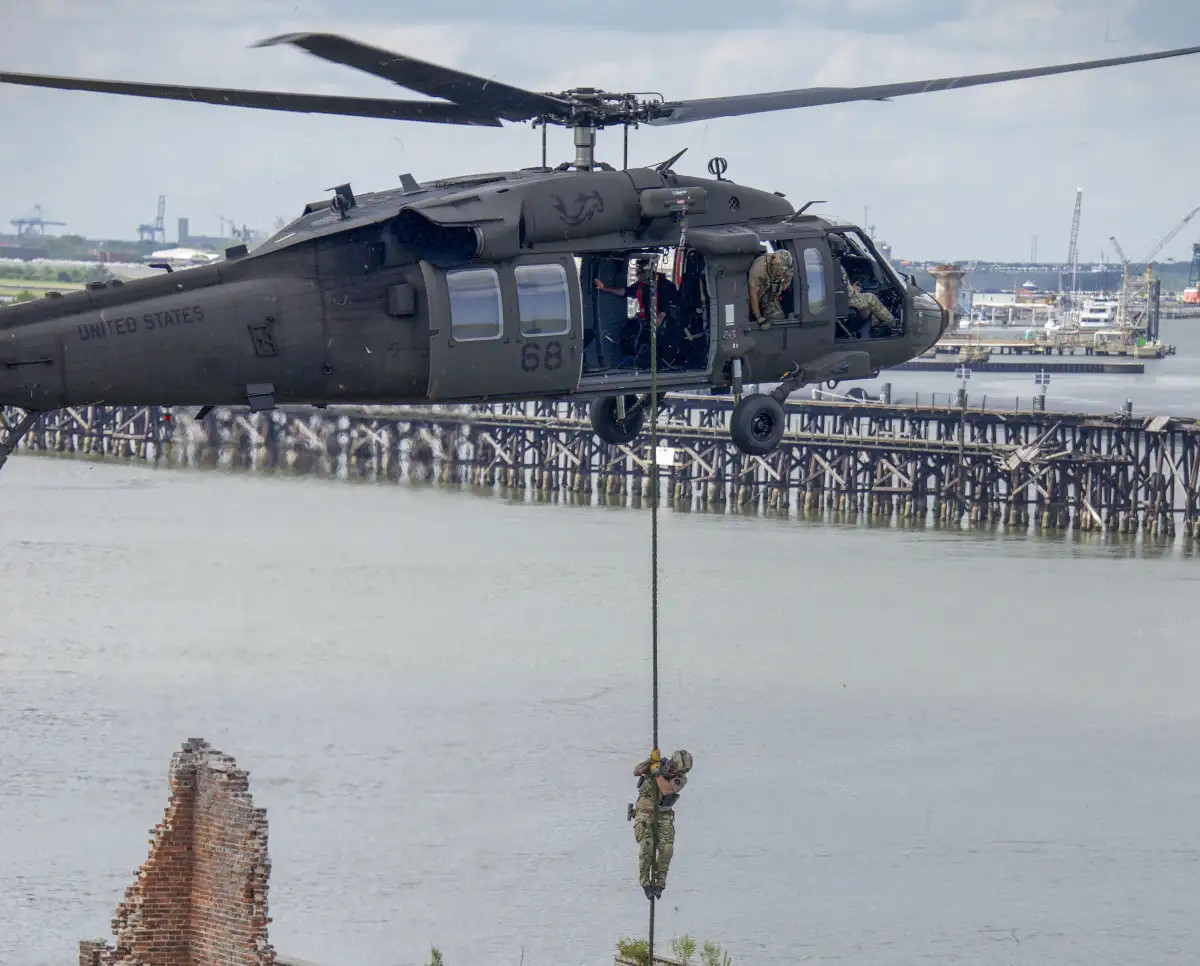
There is another possibility that these helicopters could belong to one of the U.S. military’s most shy aviation units, a U.S. Army element known today as the Aviation Technology Office (ATO). It was previously called the Flight Concepts Division (FCD) and it, as well as its predecessor organizations, also have deep ties to the Central Intelligence Agency (CIA).
This unit, which operates a wide array of aircraft, recently including Bell 407s, and foreign-made types, such as Russian Mi-17 Hips, is based at Felker Army Airfield at Fort Eustis in Virginia. A satellite image of Felker, dated Dec. 2, 2020, which The War Zone obtained from Planet Labs, shows three Bell 407s on the ramp, at least two of which appear to be of a similar color to the ones that have been flying over Los Angeles in the past few days.
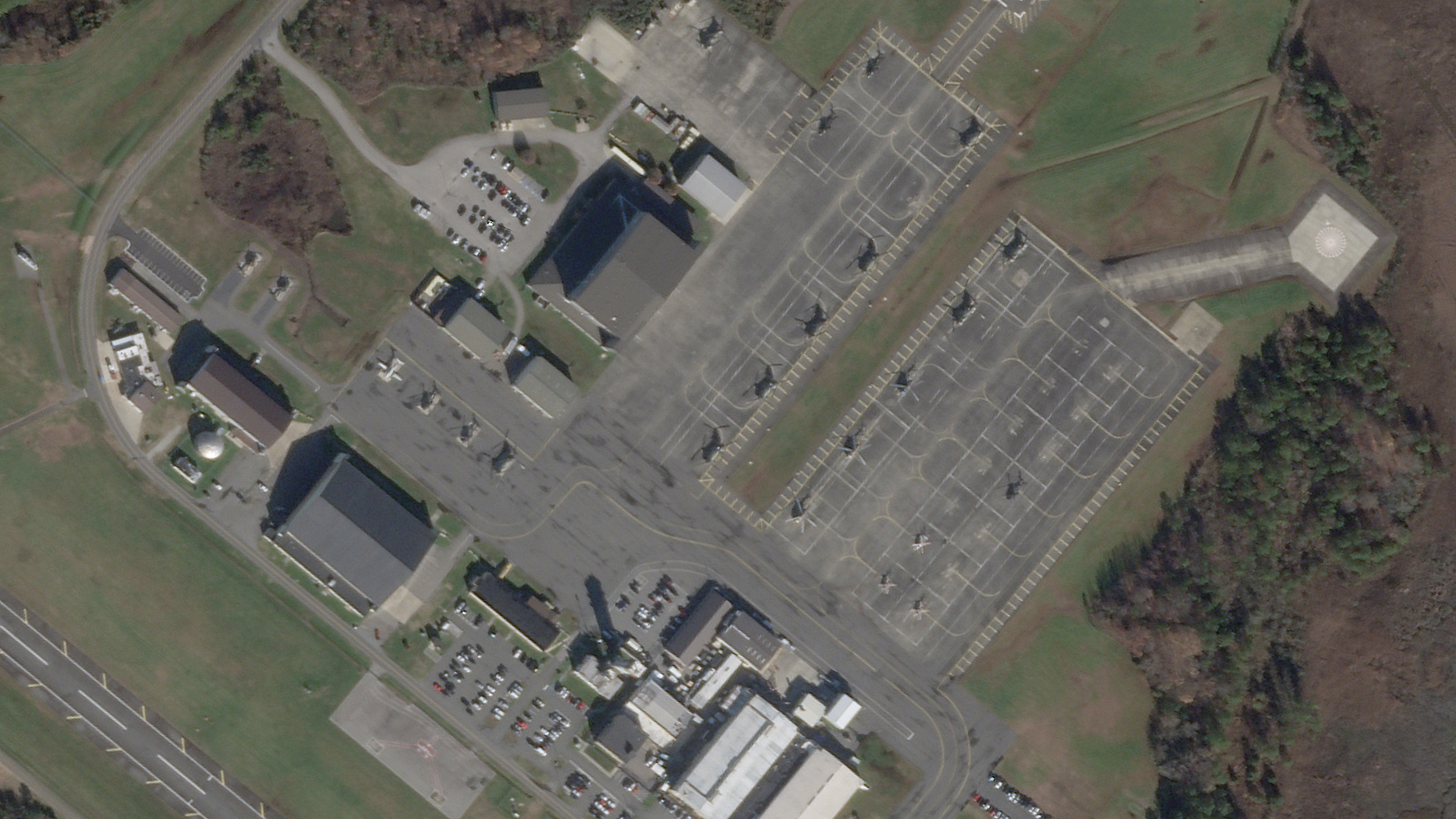
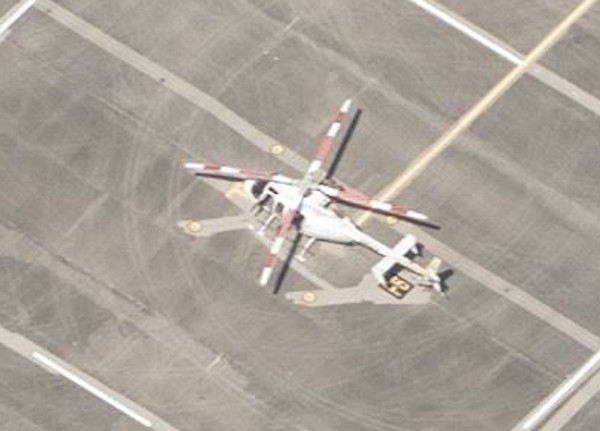
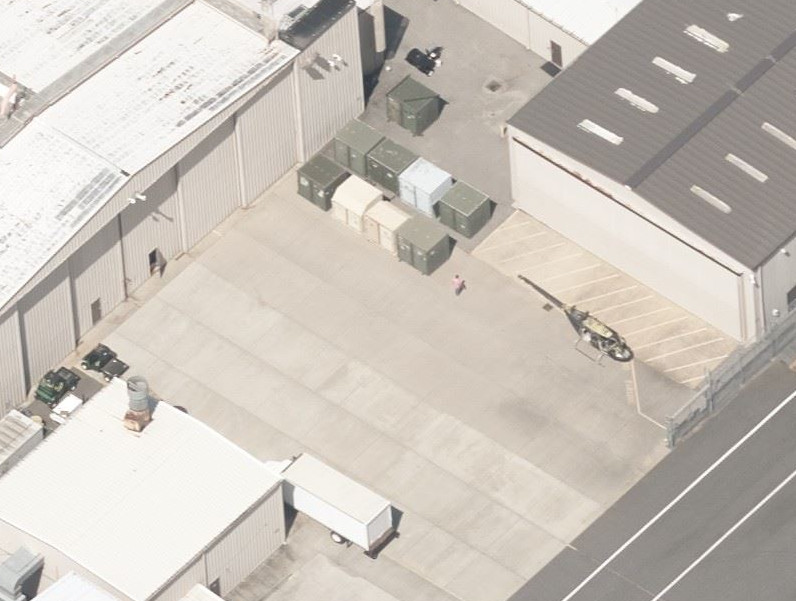
ATO/FCD, which you can read more about in these past War Zone pieces, provides highly specialized and discreet aviation capabilities in support of covert and clandestine special operations missions. They’re also tasked with developing what’s next in Army aviation. Sometimes those missions converge and the unit is understood to have led the development of the Stealth Hawks, the heavily modified UH-60 Black Hawk variants that were employed in the raid that led to the death of then-Al Qaeda leader Osama Bin Laden in his compound in Abbottabad, Pakistan in 2011.
The general paint scheme and antenna configuration of this trio of Bell 407s are reminiscent in some ways of the configuration of a shadowy Hughes 369D helicopter photographed in what was then West Germany in 1987. That helicopter belonged to Seaspray, a joint Army-CIA aviation unit that is a predecessor to ATO/FCD. You can read more about that organization and that helicopter in this past War Zone piece.
The hex code associated with the transponder on one of the mystery helicopters in southern California, AE69D1, shows up multiple times last year on flight tracking websites in the general area between Newport News and Virginia Beach in Virginia. Fort Eustis is just north of Newport News.
There are also tracks heading in the general direction of Fort Bragg in neighboring North Carolina, which is an epicenter of U.S. military special operations forces activity, including the secretive Joint Special Operations Command (JSOC). The Dam Neck Annex at Naval Air Station Oceana in Virginia Beach is also home to the Naval Special Warfare Development Group, better known as SEAL Team Six.
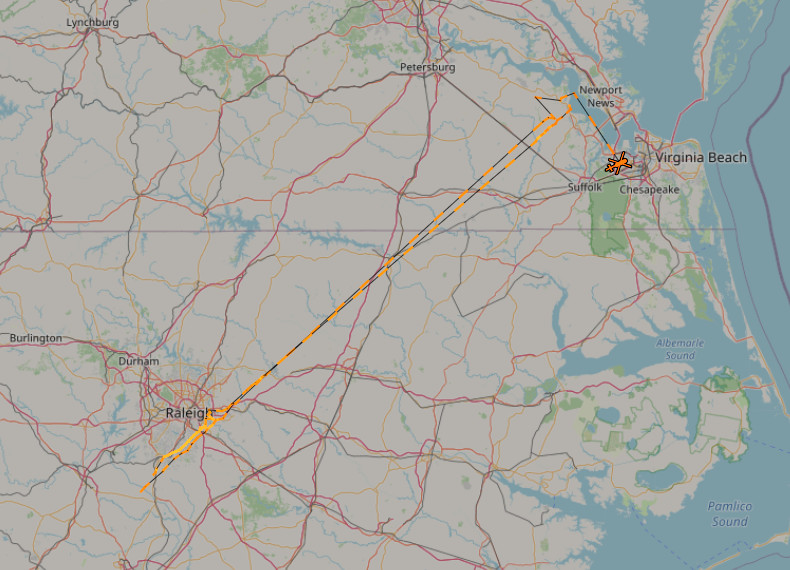
On Sept. 22, 2020, a helicopter with a transponder programmed with this AE69D1 hex code notably pops up near Wright-Patterson Air Force Base in Ohio. In that instance, as well as others from last year, the “callsign” was also identified as “191262,” another possible serial number.

U.S. Air Force aircraft serial numbers are written in an XX-YYYY format, where the XX is the fiscal year in which it was purchased and the YYYY is an arbitrary number. Army aircraft serials are in a similar format, but with five digits in the “Y” portion, instead of four. As such, this serial could be 19-1262 or 1-91262, though the latter would be incomplete. A cursory online search does not produce results for either formation.
It’s also entirely possible that this a bogus serial, as could well be the case with the ones previously associated with the Iraqi Bell 407s. The U.S. Air Force has told the author on the record in the past that it provides serial numbers for aircraft belonging to other government agencies “as a matter of convenience,” specifically in response to records relating to the RB-69A Neptune. These Cold War spy planes were assigned Air Force designations and given Air Force serials, but were actually operated by the CIA.
The style of the serial numbers, as well as the general circumstances surrounding these Bell 407s, also feels similar to the matter of an Mi-171E helicopter, a variant of the Russian Mi-17, which carries the Air Force style serial number 15-5207 on its tail. This helicopter, which is widely understood to be operated by the U.S. military, or some other arm of the U.S. government, was notably photographed at Bob Hope/Hollywood Burbank Airport in 2016.
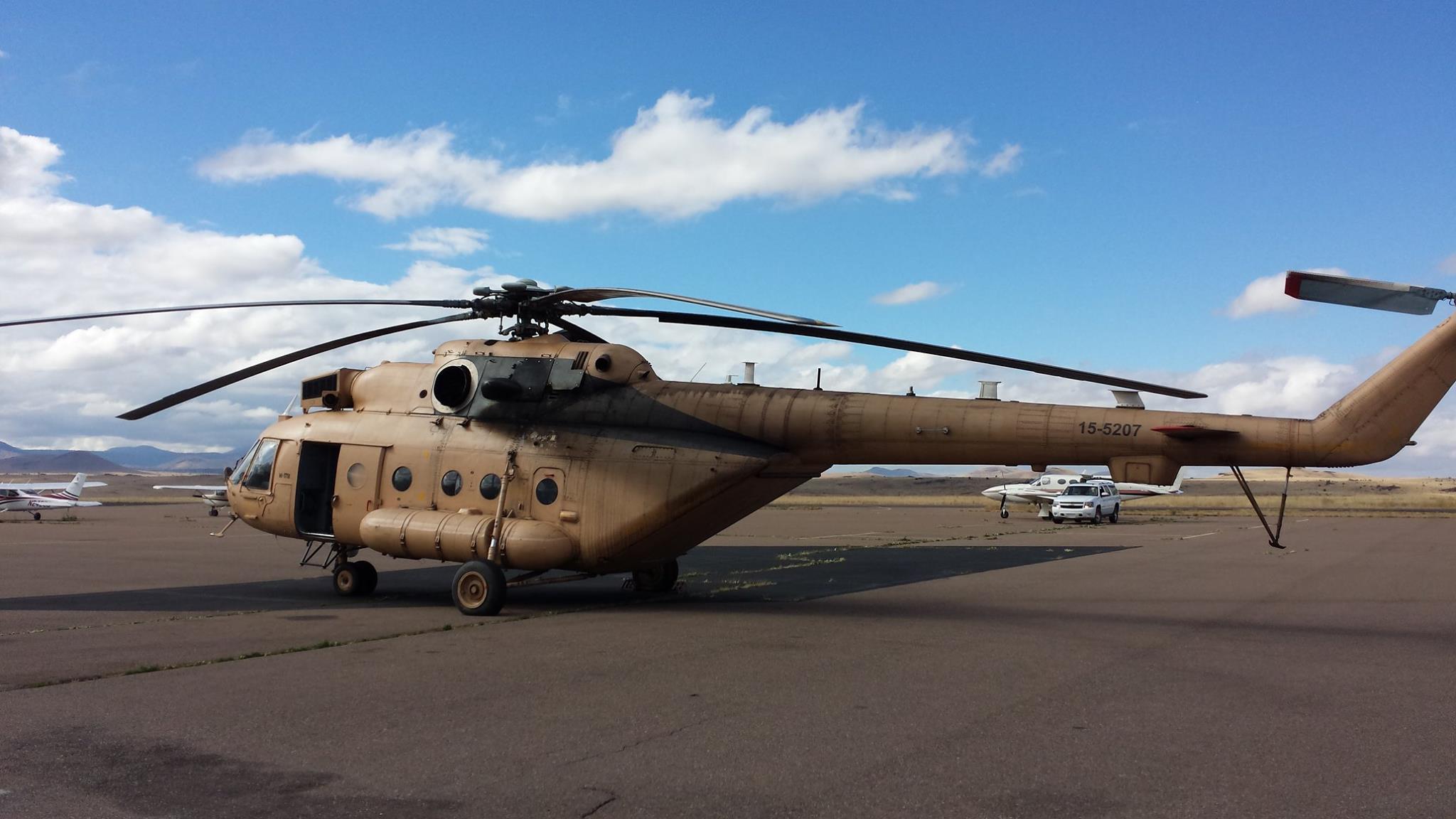
The color and configuration of this helicopter, which is festooned with antennas, is similar to ones that have been seen at Felker Army Airfield and that likely belong to ATO/FCD. The CIA also has a long and well-known history of operating versions of the Mi-17, including during the very earliest phases of U.S. operations in Afghanistan following the Sept. 11, 2001, terrorist attacks. In response to a Freedom of Information Act (FOIA) request, the Air Force told The War Zone it had no record of this serial being assigned to an Mi-17 variant. Regardless, the Mi-17s fly regularly out of Felker Field.
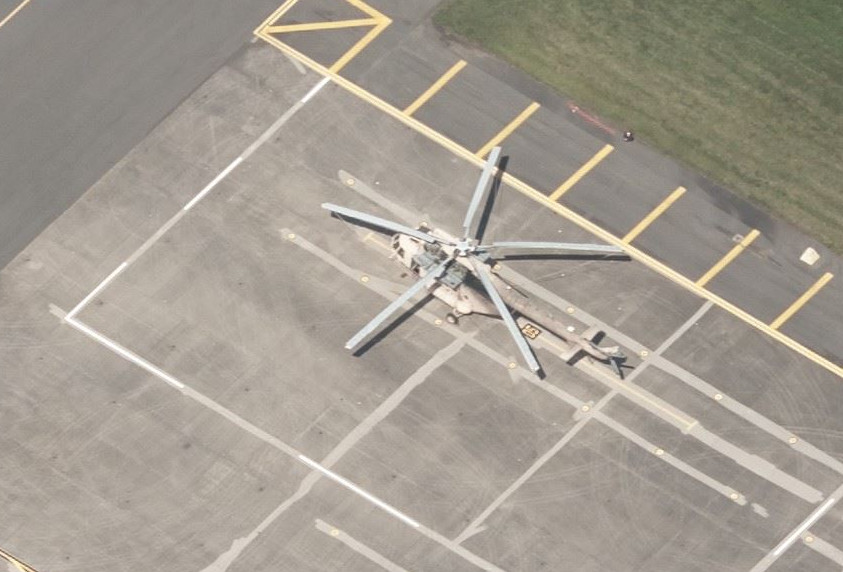
Still, while we know that Bell 407s are directly associated with ATO/FCD, we really don’t know with absolute certainty that the unit, or their Agency associates, are operating the mystery helicopters that have been spotted around Los Angeles, although the evidence strongly points to it. The fact that the serials line up with the left behind Iraqi Bell 407s is also quite telling.
Regardless, their current operations are anything but clandestine, so they are bound to keep grabbing people’s attention. We’ll be sure to follow up if and when we uncover more information about them.
UPDATE: We have new information on these helicopters and their activities around LA that you can read about here.
Special thanks to Chris Shaw and Scott Lowe for sharing their pictures of these mysterious helicopters with us.
Contact the author: joe@thedrive.com
